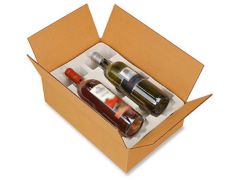Collection: Gift Style and Fun.
There's a Wine [Accessory] For That!
See All Accessories


Red and white wines are seldom ever blended to make rosé. It's quite a frowned upon method and is traditionally only used in the blending of still wines for rosé Champagne, prior to secondary bottle fermentation.
When red grapes are processed to make wine, contact between the juice and the skins results in the extraction of color, flavor (and tannins) to the wine. The amount of time the juice is left in contact with the skins determines its color and impacts its flavor profile.
Some of the best rosés are made from grapes harvested specifically for rosé production. That might mean picking the crop slightly earlier to retain more acid in the grape, resulting in more freshness/lift in the wine.
Sometimes winemakers use the Saignée method, where they drain off some of the juice when making a red wine. This is done after minimal skin contact, lending the juice its pink color. This method concentrates and intensifies the remaining red wine, but at times (not always with a skilled winemaker) the resultant rosé can seem like an afterthought.
Rosés can express different flavor profiles depending on the grapes used, the length of skin contact and wine making techniques, including the fermentation or storing vessel used. Grenache, Cinsault, Syrah and Mourvèdre (think Provence), Pinot Noir, Cabernet Franc and Sangiovese, are the most common red grapes used to make rosé.




 Add Photo &/or Message ($6.00)
Add Photo &/or Message ($6.00)
 Add Another Bottle
Add Another Bottle

 Add Photo & Message ($6.00)
Add Photo & Message ($6.00)
 Add Photo & Message ($6.00)
Add Photo & Message ($6.00)
There's a Wine [Accessory] For That!